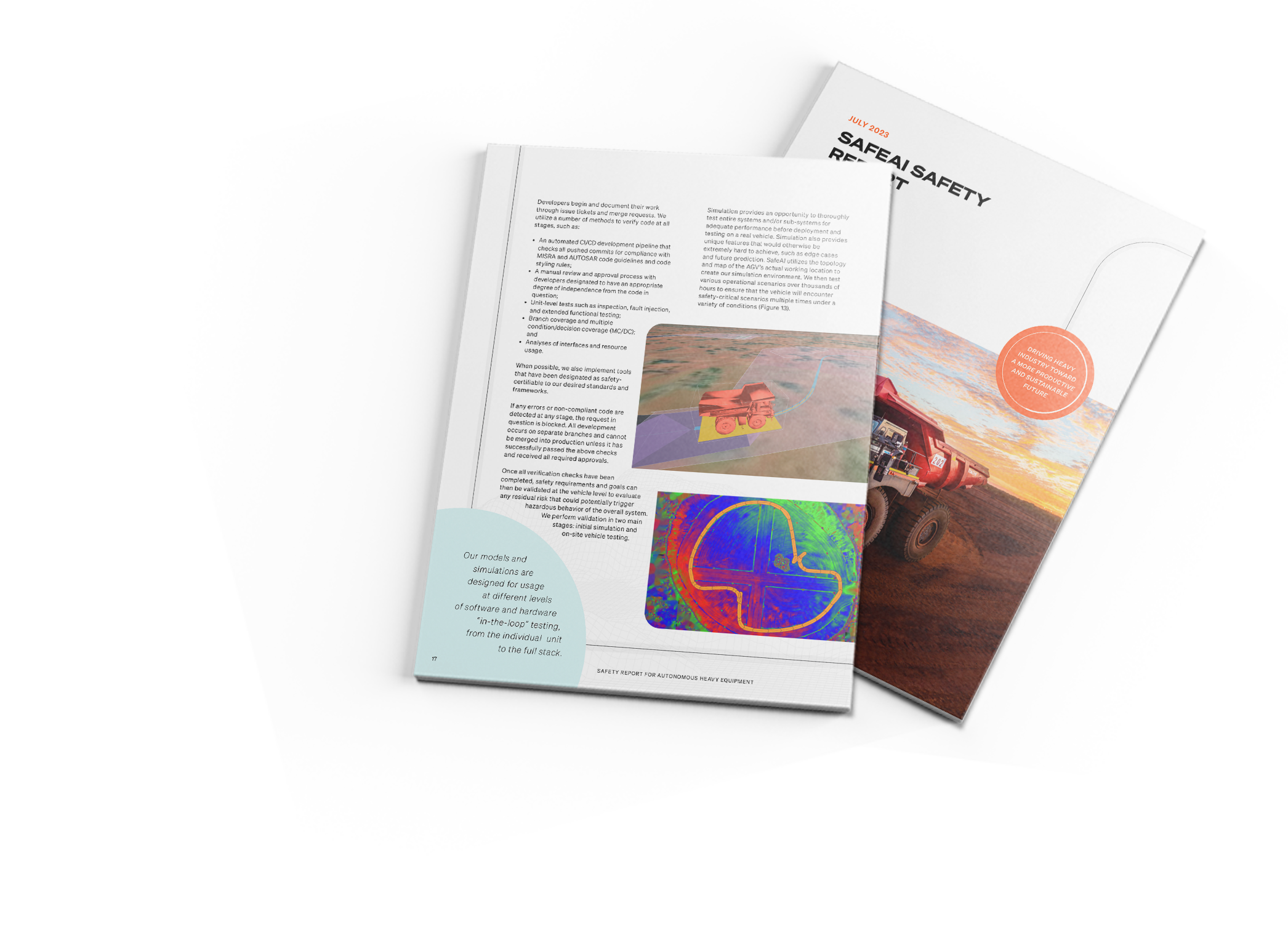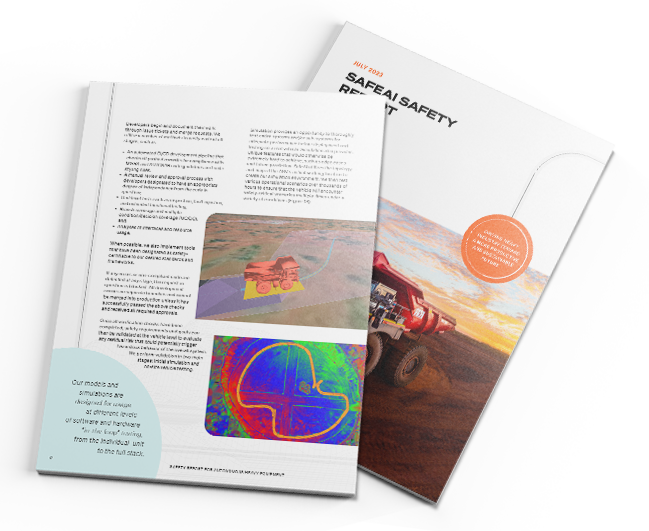Safety
Ensuring a safe product and work environment is our most important job for our customers, and for the industry.
Our Top Priority
We understand the critical importance of ensuring that our technology, work product, and personnel all adhere to the highest safety standards. From the operating system, the software development, and the day-to-day operations at our customers’ sites around the world, our priority is to deliver a safe product and work environment with our autonomous operations, while working collaboratively with our customers and partners to ensure that we are adhering to their specific safety guidelines and processes.
Our team has deep expertise in developing critical safety protocols and technology for autonomous vehicles, as well as development in advanced AI technology, in which we hold several patents. “Safety Above All Else” is our first value for a reason – it’s the one that matters the most to us and it will never be compromised.
Our SAF operating system also been awarded the ASIL D certification, the highest safety integrity level in the industry. You can learn more about our ASIL D certification here.
safety framework
We’ve built our overall framework to address a “safety first” approach which begins early in the design phase and continues all the way through to deployment, and beyond. We work collaboratively with each of our customers to develop a Safety Plan that aligns with their unique needs and requirements.
We use the System-Theoretic Process Analysis (STPA) for hazard analysis and as the foundation of our Safety Framework, and for our top down analysis (from concept to deployment) to assist in identifying safety requirements and constraints.
Our code has been developed in accordance with MISRA and AUTOSAR, the rules and guidelines established for safe software development in automotive and vehicular industries. We’ve also been awarded the ASIL D certification, the highest safety integrity level in the industry.
Our safe work practices include advanced education and training, change management, secure access to the Autonomous Operating Zone (AOZ), visible mode change procedures, vehicle-to-vehicle (V2V) communications, and strict emergency response protocols.



